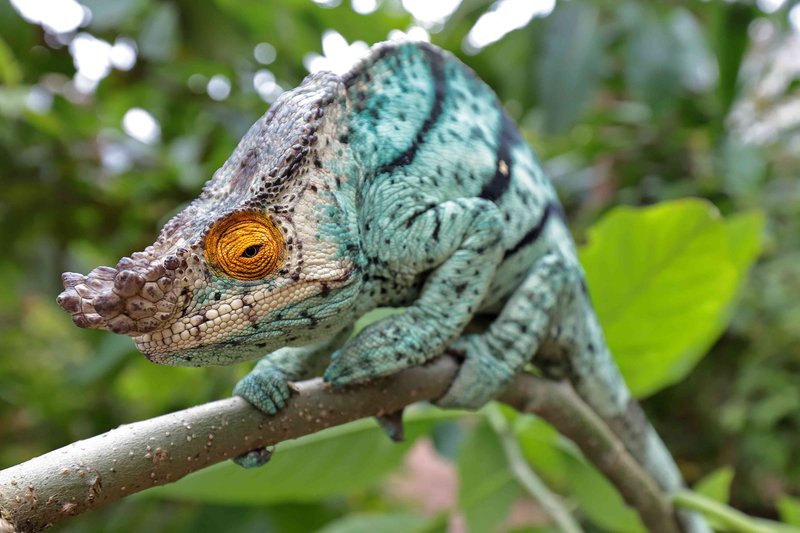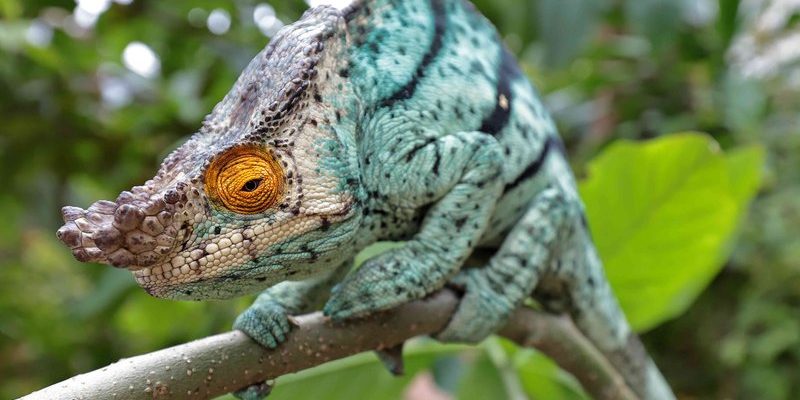
In this journey, we’ll explore the habitats of chameleons, diving into the corners of the world where they flourish. From the lush forests of Madagascar to the arid deserts of Africa, each place presents unique living conditions that suit these extraordinary lizards. Grab your metaphorical binoculars, and let’s set off to discover where chameleons can be found!
Madagascar: The Chameleon Capital
When you think of chameleons, Madagascar probably springs to mind first. This island nation is home to about half of the world’s chameleon species, making it the ultimate hotspot for these colorful creatures. Imagine a place where every corner you turn offers a new kind of chameleon, each with its own vibrant colors and patterns.
Madagascar’s diverse landscapes—from coastal rainforest to dry spiny forests—provide rich habitats for chameleons. There are species like the Parson’s chameleon, which can grow up to 27 inches long, and the tiny Brookesia chameleons, which are among the smallest reptiles in the world. Here’s the thing: chameleons love environments where they can blend in with their surroundings, so all those dense leaves and branches are perfect for them!
Unique Ecosystems
The unique ecosystems found in Madagascar play a significant role in the chameleons’ survival. Rainforests offer abundant food sources, like insects and other small creatures. On the other hand, the dry regions provide ample spots for sunbathing, which is crucial for their metabolism. This variety means that different species have adapted to suit their specific niches, making Madagascar a true paradise for chameleons.
Africa: Beyond Madagascar
While Madagascar is the shining star, many chameleon species also inhabit the mainland of Africa. Countries like Kenya, Tanzania, and even parts of South Africa have their own chameleon inhabitants that display a range of colors and sizes.
In these regions, chameleons are often found in savannas and forests, where they can cleverly hide in foliage and take full advantage of the sun. The Jackson’s chameleon, for instance, is famous for its three horned head and vibrant green and yellow hues, commonly spotted in the East African highlands.
Adaptability in the Wild
Chameleons in Africa have developed incredible adaptability skills. They can thrive in varying climates, from the humid coasts of the Indian Ocean to the dry savannas of the Serengeti. Their unique ability to change color isn’t just for show; it helps them camouflage and regulate their body temperature. This adaptability is key to their survival in such diverse habitats.
Asia: Lesser-Known Habitats
You might be surprised to learn that a few species of chameleons call Asia home as well! For instance, the Seychellois chameleon can be found on the islands of Seychelles, while some species are present in areas of southern India and Sri Lanka.
These chameleons prefer tropical environments, where they can find plenty of trees and shrubs to climb. Honestly, it’s pretty impressive how these little creatures have made their way across oceans to find new homes. Their presence in Asia shows just how adaptable and resilient they are!
Threats to Their Habitats
Chameleons in Asia face threats similar to those in Africa and Madagascar. Habitat destruction due to logging and urbanization is a growing concern. As forests are cut down to make way for development, these reptiles find it increasingly difficult to survive. Conservation efforts are critical to ensure that these beautiful lizards continue to thrive in their natural habitats.
The Role of Chameleons in Ecosystems
Chameleons play an essential role in their ecosystems. By eating insects, they help control pest populations. This natural pest control is vital for maintaining a balanced environment. Plus, their unique adaptations make them interesting subjects for studying evolution and biodiversity.
In Madagascar, for example, the loss of chameleons can lead to an imbalance in the ecosystem, affecting everything from plant health to the health of other animal populations. You might be wondering how these little creatures can have such a big impact—well, nature works in intricate ways, and every species has its part to play.
Conservation and Protection
To ensure chameleons continue to thrive, several conservation initiatives are underway. Many organizations focus on protecting their natural habitats and educating local communities about the importance of these creatures. By raising awareness and implementing protective measures, we can help safeguard chameleons and the ecosystems they inhabit.
From the lush landscapes of Madagascar to the savannas of Africa and the tropical islands of Asia, chameleons can be found in some of the most beautiful places on Earth. Their unique ability to adapt has allowed them to thrive in various environments, each filled with its own challenges and wonders.
As we continue to explore and learn about these remarkable reptiles, it’s essential to remember the role we play in protecting their habitats. By valuing the ecosystems that chameleons call home, we can ensure that their vibrant colors and astonishing behaviors continue to enchant future generations. So, the next time you marvel at a chameleon, remember the journey it took to find its place in the world—it’s a reminder of the beauty and complexity of nature!

